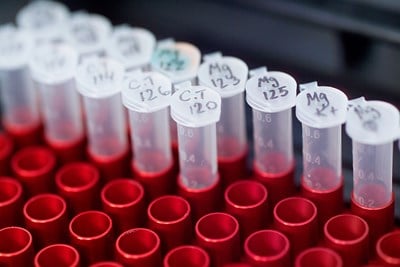Blood cancer can affect your blood, bone marrow, and lymphatic system. However, most blood cancers develop where your blood is produced—in your bone marrow. There are three main types of blood cancer: leukemia, lymphoma, and myeloma. Here is a look at how all types of blood cancer are diagnosed.
Complete Blood Count (CBC)
A CBC is an essential first step to diagnosing blood cancer. Typically, it is ordered if you are experiencing signs or symptoms that are associated with a certain type of blood cancer.
The blood test can determine not only your general health, but can also identify disorders by measuring components of your blood. For example, the test evaluates the three types of blood cells in your blood: white blood cells, red blood cells, and platelets.
Blood Film
Also called a blood smear, a blood film is a small sample of your blood smeared on a microscope slide. The slide is then stained in order to allow blood cells to be seen microscopically. The test is often done as a follow-up test if your CBC test is abnormal. Results of a blood film include a description of the three types of blood cells as they appear, as well as any abnormalities that are present on the slide.
Biopsy
A sample of your bone marrow may be taken from your hip bone if your CBC is abnormal. Your bone marrow is a soft tissue inside your bones that aids in the formation of blood cells. A biopsy procedure is sometimes recommended in order to diagnose a specific type of blood cancer. It can also determine if the cancer has spread to other areas of the body.
Image Testing
Several different imaging tests are done to help diagnose blood cancer and how it is affecting your body. The tests take images of your chest, abdomen, head, neck, and other areas. Imaging tests can also detect bone changes, which is common with myeloma. Such tests include X-rays, CT scans, ultrasounds, and MRIs.



